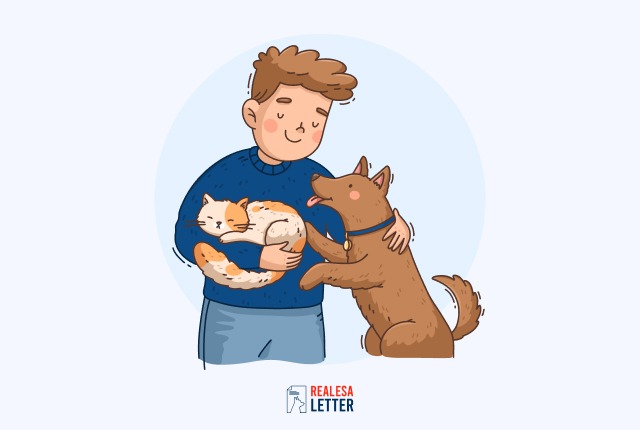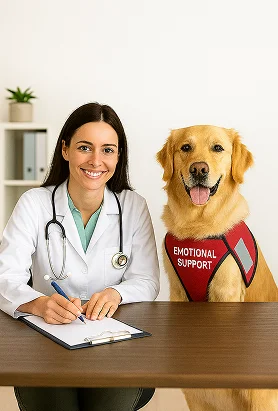Pet owners believe that dogs are just like us humans!They dream the same way a human dreams.If you own a dog, you must have noticed how your dog quivers and twitches in sleep — giving the impression that he is chasing after someone in his dream.Dogs sleep more than humans do; however, their sleep structure is quite similar.But do they dream like us? How do we find out?This blog answers all the questions.
Does my Dog Dream Like Me?
‘Dogs do dream’, said professor Stanley Coren, University of British Columbia, and the author of the book, ‘Do Dogs Dream? Nearly Everything Your Dog Wants You to Know’.
This means yes, your dog dreams like you.
Dogs sleep more than us but their sleep pattern is interestingly ‘human’, or similar to humans. According to Coren, dogs also experience different sleep cycles like us. The cycle includes bouts of wakefulness, rapid-eye-movement (REM) sleep, and non-rapid-eye-movement stage of sleep.
Observations of six pointer dogs’ brains during a 24-hour period by the scientists reporting in Physiological Behavior journal in 1977 found that 44% of their time was spent alert, 21% drowsy, and 12% in the REM sleep cycle.
Moreover, they spent 23% of their sleep in the non-REM sleep cycle, which is the deepest sleep stage also known as slow-wave sleep.
In the case of humans, during REM sleep, the brain is still active and dreams are more likely to be remembered. Non-REM sleep can involve mundane dreaming that people will forget about after they wake up.
According to Matthew Wilson, a cognitive scientist at the Massachusetts Institute of Technology, the disparity between these two types of dreams could account for why most people awaken right after an episode of REM, while those with non-REM dreams might continue sleeping through it.
In 2001, Wilson and his colleagues conducted an experiment on rats’ brains to find out that they have the same brain activity as us. The researchers recorded the activity of the multiple neurons in the rats’ brains while they were working on maze tasks.
Afterward, they recorded the activity of the same neurons during their REM sleep. In simple terms, rats dreamed about their run in the maze.
The rats seemed to be living out their waking lives in REM sleep, a study published in 2001, in the journal Neuron. About 44% of the time researchers found brain wave patterns that were similar to the ones it produced during the maze runs when they were awake.
In the consecutive year, they found out that non-REM sleep patterns are less coherent than the ones produced during the REM phase of sleep. However, these bouts are dreamlike for the rats but not as memorable as the REM dreams. Wilson and his colleagues found that those neurons were targeted at the hippocampus part of the brain.
"They were 'seeing' what the hippocampus was dreaming about," reported Wilson.
The study confirmed that rats do in fact dream in their REM sleep. This study helped to confirm that mammals do have the ability to dream, which means that dreams occur in both vertebrates and invertebrates alike.
Wilson further adds that the reason behind these dreamy patterns is that sleep boosts memory formation and has a role in learning also. This is why disturbed sleep results in weak memory.
The patterns formed during the non-REM sleep categorize the activities of the day while the one formed during the REM cycle is the brain’s way of exploring in a free and non-consequence surrounding.
Understanding a Dog’s Sleep Cycle - What Do Dogs Dream About?
Dogs enter the REM sleep cycle about 20 minutes into the sleep and could stay there for about 2 to 3 minutes. During this phase, you may notice your dog’s breathing becoming irregular and heavy. Muscle twitching is more common in puppies and old dogs but why does this happen?
Humans and dogs have pons in their brains that control the big muscles and stop them from moving during sleep. It paralyzes them and stops the humans and animals from acting out their dreams. Without them, we would act out everything we are dreaming about, scary, right?
Coren states that puppies and older dogs do not have fully developed pons, which is why they often twitch during their sleep. In the same way, human babies and older people also move in their sleep because their pons is less effective.
As per research, a way of finding out what your dog might be dreaming of is to temporarily disable their pons and let them act out their dreams.
‘What is my dog dreaming about?’
The results and answer would be quite interesting and usually, dogs dream about doggy things like the little squirrel living in your backyard tree.
"What we've basically found is that dogs dream of doggy things," Coren stated. "So, pointers will point at dream birds, and Dobermans will chase dream burglars. The dream pattern in dogs seems to be very similar to the dream pattern in humans."
Do Dogs Dream About Their Owners?
It is possible because dogs relive the moments that happened while they were awake. So, whatever they see or do can come up while they are dreaming. This explains the twitching and other movements they make while dreaming.
So if your dog runs to you for a cuddle then it is quite possible that he has been dreaming about you.
‘How does my dog sleep so much and normally, how long do dogs sleep?’
This is a common dog owner query.
Dogs and humans sleep differently than us and this is because we have different sleep cycles. We humans can sleep for long uninterrupted hours. Dogs do sleep longer than us, but they don’t sleep at a long stretch. Their sleep is broken down into several short intervals.
Mostly, dogs copy our sleeping patterns. Often, we find them sleeping through the day because they don’t get enough sleep at night.
Do All Dogs Dream in the Same Way?
‘Does the dog’s breed affect the way he dreams?’
Not really but the size of the dog affects the way they experience dreams. The frequency and duration of the dream depend on their size and age.
Small dogs and breeds dream more frequently than large dogs. However, small dogs have more frequent and shorter dreams than larger breeds. Large dogs and breeds have fewer but longer dreams.
Research shows that young and small dogs have more frequent dreams as compared to older and large dogs since they take naps more often.
Smaller dogs’ dreams don’t last as long as older dog’s dreams. For example, a Maltese may have a dream every ten minutes which will last for almost five minutes whereas a German Shepherd dreams every two hours which lasts for a longer time period.
Do Dogs Have Nightmares Too?
While this hasn’t been scientifically proven yet, you can tell when your canine companions are having a bad dream. Probably when they are screaming and kicking in their sleep. Similarly, just like we do not know why we have nightmares the same way, why dogs or cats have nightmares is also an under research topic
Therefore, to answer what do dogs dream about, you must observe their movements while they are asleep.
What do Dogs Have Nightmares About?
There are a lot of possibilities about what your dog may be having a nightmare about. Like we said earlier, like us humans, dogs dream about the things they do the whole day.
One of our team members has a Shih Tzu, named Fluffy, and she discussed that her dog sometimes twitches in her sleep and runs towards her upon waking up. Fluffy is scared of the neighbor’s dog and, quite often, chased by him.
Since, like us, dogs dream about the things they do during the day, it is likely that she was being chased by the neighbor’s dog in her dreams. This is why she ran to her owner upon waking up.
This is true in the case of other dogs also, which means that if your dog wakes up scared, he is probably dreaming about something he is scared of.
Coren states that dogs could also have narcolepsy, a disease in which the brain falls asleep suddenly. But they do not have sleep paralysis like humans. In this condition, the muscles wake up before the brain switches to awake mode and the person is unable to move.
The main cause of sleep paralysis is sleep deprivation, which is rare in the case of dogs, and according to Coren,
"You give a dog an opportunity, and he lies down and he closes his eyes”, just like that.
Should You Wake a Dreaming Dog in Case He is Having a Nightmare?
No, you must never wake him up abruptly when they are having a bad dream. It can cause more damage and scare them further.
Ever heard the saying, ‘let sleeping dogs lie’? You should listen to it and take it as advice.
However, if you want to help your dog and calm him down, use CBD treats and oil. They have been proven beneficial by many dog owners and veterinarians.
CBD dog treats and CBD oil for dogs can help calm an anxious dog and puppy nightmares.
Is my Dog Dreaming when He Makes Sounds or Moves in His Sleep?
Does your dog make funny and weird noises when sleeping? Don't worry, it is completely normal and he may be dreaming at that time.
Dogs make a number of sounds when sleeping. These sounds include whimpering, barking, growling, muscle twitching, and even running. All of it is part of the dreams that they are having at that time.
According to Dr. Richter, “While we don’t know exactly what dogs are dreaming about, their behaviors while sleeping could potentially be correlated with what they’re dreaming about—for example, if a dog is sleep barking, he might be thinking about a squirrel running up a tree.”
Usually, dogs dream about what they do during the day.
Here are the reasons behind some common doggie-in-sleep behavior:
- Barking in Sleep: Chasing cats, squirrels, or other small animals, playing with his doggie friends
- Running in Sleep: Chasing another animal, running towards you or away from an animal
- Growling in Sleep: Reliving a memory when your dog growled
- Crying and Whimpering in Sleep: Reliving the time when he was distressed
Besides, there could be many other reasons and types of sounds that your dog could make in his sleep.
Pricing
PSD Letter
Reviews
ESA By States
ESA Laws
Resources




